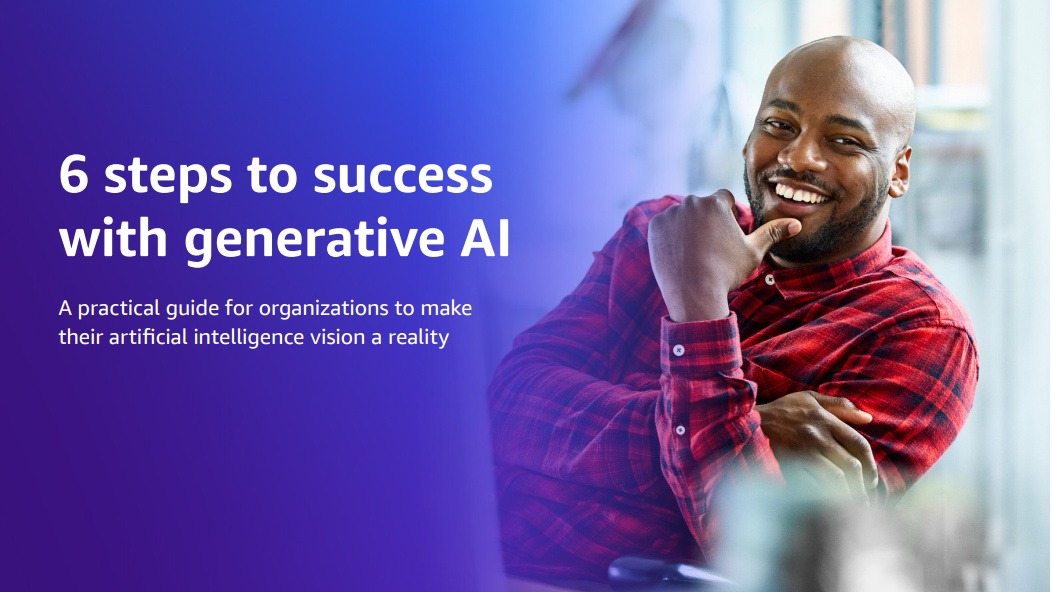How chief AI officers can streamline strategy from the boardroom down
Dedicated chief AI officers can be integral to corporate strategy on complex AI integration and spiraling use cases at the enterprise level


While time-saving AI tools have sparked a flurry of interest and are already presenting business leaders value, implementation is far from uniform. Some companies have created the role of a chief AI officer (CAIO), a role specifically designed to oversee AI operations, integration, and controls at the enterprise level.

Where exactly this crosses over with roles currently entrusted with AI, however, such as chief digital officers (CDOs) or chief information officers (CIOs), will depend on the demands of different organizations. What is clear is that with a dedicated role for AI, businesses can plan their AI strategy more effectively without burdening existing roles with extra work.
Coca-Cola, for example, promoted two executives to the roles of global head of generative AI and global head of marketing AI in June 2023, according to the Wall Street Journal.
Businesses are integrating AI in many different ways, from AWS’s enterprise-grade ‘Amazon Q’ assistant to AI-powered cyber security, and, while these solutions show promise for productivity and defense, they need to be managed effectively.
The chief AI officer role will be about strategy as much as technology
In conversation with ITPro, head of UK connected technology at KPMG Paul Henninger explains why these new roles are so complex, and why the role of an AI executive is so nuanced.
“At KPMG, we have appointed a global head of AI for the whole firm. Our thinking was that, as AI is an inter-departmental issue, there needs to be someone who’s in charge of oversight across the company,” he says.
“In some ways, AI doesn’t just demand a technology role, it demands a strategy role.”
Get the ITPro daily newsletter
Sign up today and you will receive a free copy of our Future Focus 2025 report - the leading guidance on AI, cybersecurity and other IT challenges as per 700+ senior executives
Heninger says that we need to think about the role of AI in three different ways to fully understand the remit of a CAIO. In the first instance, AI can be a productivity tool for individuals, helping to boost efficiency for specific tools or use cases. Secondly, AI comes with lots of potential enterprise applications, realized through complex, bespoke AI models created to undertake large-scale tasks.
Finally, there are the cognitive enterprise applications of AI, a frontier that may one day reach the point at which AI could be trained to oversee or lead whole departments.
“That’s why CAIO roles are so important – someone needs to oversee and control how all these different use cases are being rolled out,” Henninger adds.
RELATED RESOURCE

Maximize the results from your AI initiatives
DOWNLOAD NOW
At the same time, CAIOs need to understand not just how the company as a whole will benefit from AI, but also how their individual members of staff will benefit.
“My aim has always been to solve a need, to find the best outcome to a problem in the most economical way,” says healthcare and technology entrepreneur Ron Gutman. “AI can help with that. It’s all about combining human creativity with AI productivity,” he added.
This is the bottom line in many ways – AI is just a tool without a mind of its own and, like any tool, its effectiveness will be defined by how humans decide to use it.
Chief AI officers can bring AI expertise to the boardroom
AI didn’t just take the world by storm; it also took it largely off guard. Since OpenAI launched ChatGPT in November 2022, there’s been a gold rush to implement AI tools anywhere and everywhere within businesses, in a knee-jerk reaction to explosive market interest.
Back in October 2023, 45% of executives said that they were in a piloting stage of AI use, with 10% already implementing it. Other research from the same month, however, suggested that only 30% of employees admitted to having sufficient clarity on their organization’s plans to use AI.
The issue is that, because AI has been moving so fast, the skill and knowledge base isn’t fully accessible yet.
“CIOs have a broader remit around IT services information for the company,” head of artificial intelligence at CryptoOracle Collective Eric Bravick tells ITPro. “So the broader they get, the bigger the company gets, and the more they get towards enterprise, the further they get behind the curve of technology,” he added.
AI’s rate of growth demands a dedicated role with a dedicated knowledge of the technology, rather than just someone with a more generic understanding.
“These roles extend beyond the traditional purview of a CIO because they require a specialized focus on AI as a transformative tool rather than just another component of the company’s IT strategy,” CAIO at FPT Software Dr. Nguyen Xuan Phong tells ITPro.
“We may indeed see the emergence of dedicated AI departments,” he adds. “These departments will focus on leveraging AI technologies to drive innovation, efficiency, and strategic advantage in an increasingly competitive and technologically advanced business landscape.”
Chief AI officers need to tout AI’s disadvantages as much as its advantages
With so much enthusiasm surrounding AI, CAIOs need to keep at least one foot firmly on the ground to ensure a responsible and realistic enterprise rollout of the technology.
“AI executives need to make sure they’re not overselling AI,” head of AI at STX Next Bartek Roszak tells ITPro. “I think their biggest responsibility, from a strategy standpoint, is managing the expectations of AI in business, which are very high at the moment,” he added. “Production grade AI usage is not as effective as everyone thinks it is, and AI executives need to make that clear”.
Roszak speaks from a software developer standpoint, though his point extends across the industry. AI is plagued with issues bound to hamper its usefulness over the next few years.
Ongoing copyright lawsuits over ChatGPT raise concerns around the legality of AI output from generalist LLMs, hallucination continues to be a problem, and the costs of building generative AI platforms continue to skyrocket – all these considerations point to a need for CAIOs to manage AI expectations in the coming years.
AI ethics engineer and member of the IEEE Eleanor Watson also highlighted the place of ethical AI in the prospective AI executive’s responsibilities.
“The role of AI executives will be to ensure the proper rollout of AI systems,” says Watson. “The risks of AI use in the enterprise are near endless – the risk of misinformation, the potential to fall afoul of regulators, bias,” she added.
That being said, CAIOs won't be everywhere at once. Watson draws attention to the fact that its executives need to foster an environment in which any employee feels comfortable raising an issue about AI.

“There is a collective responsibility to avoid fallouts on the scale of the Horizon scandal,” Watson says. “People knew that could happen as far back as 2000, 2001, but it fell on deaf ears. There needs to be a red telephone anyone can call, especially with regard to AI,” she adds.
Rather than necessarily having all the answers on AI, a prospective CAIO should have a comprehensive understanding of how AI is being rolled out in a company.

George Fitzmaurice is a former Staff Writer at ITPro and ChannelPro, with a particular interest in AI regulation, data legislation, and market development. After graduating from the University of Oxford with a degree in English Language and Literature, he undertook an internship at the New Statesman before starting at ITPro. Outside of the office, George is both an aspiring musician and an avid reader.
-
 Bigger salaries, more burnout: Is the CISO role in crisis?
Bigger salaries, more burnout: Is the CISO role in crisis?In-depth CISOs are more stressed than ever before – but why is this and what can be done?
By Kate O'Flaherty Published
-
 Cheap cyber crime kits can be bought on the dark web for less than $25
Cheap cyber crime kits can be bought on the dark web for less than $25News Research from NordVPN shows phishing kits are now widely available on the dark web and via messaging apps like Telegram, and are often selling for less than $25.
By Emma Woollacott Published